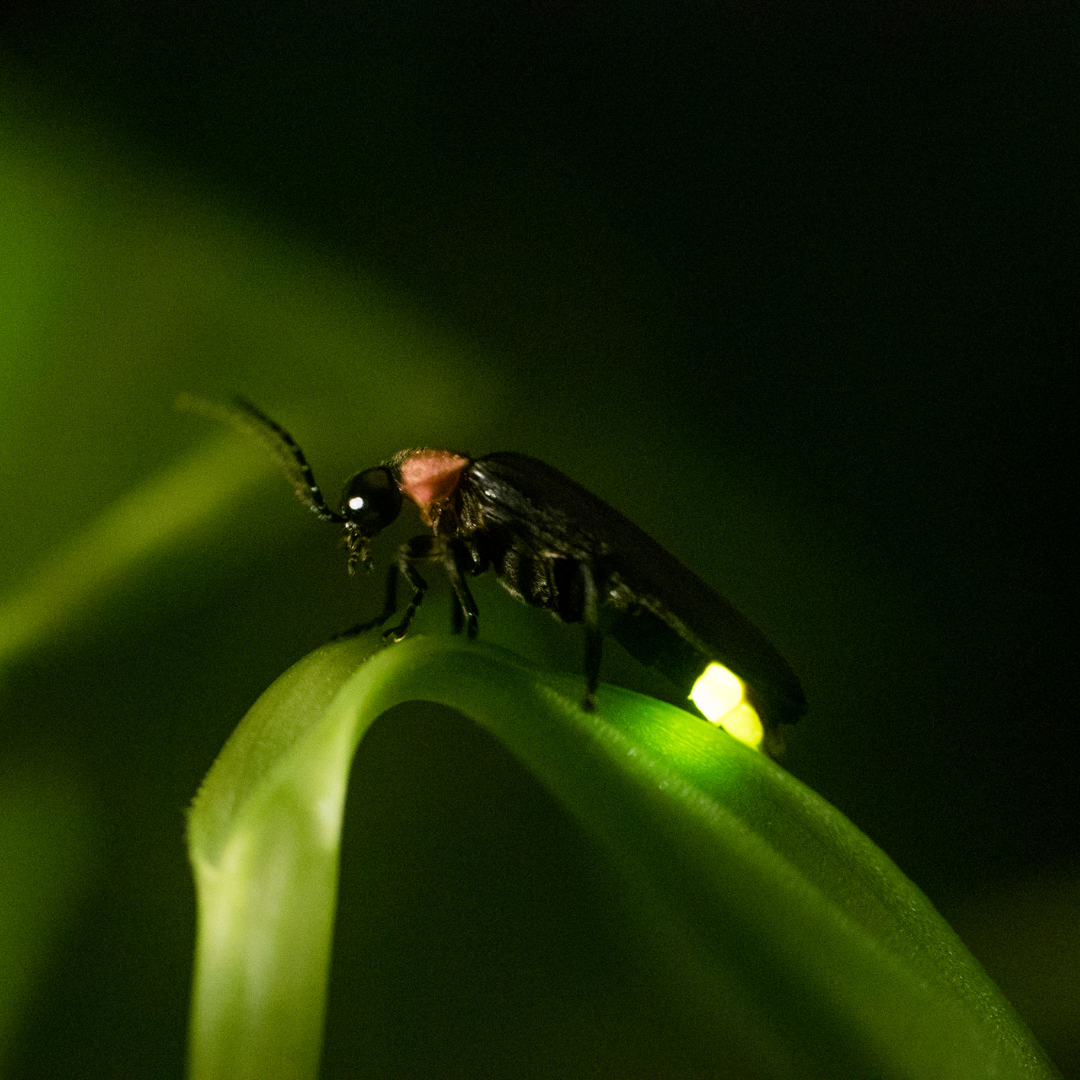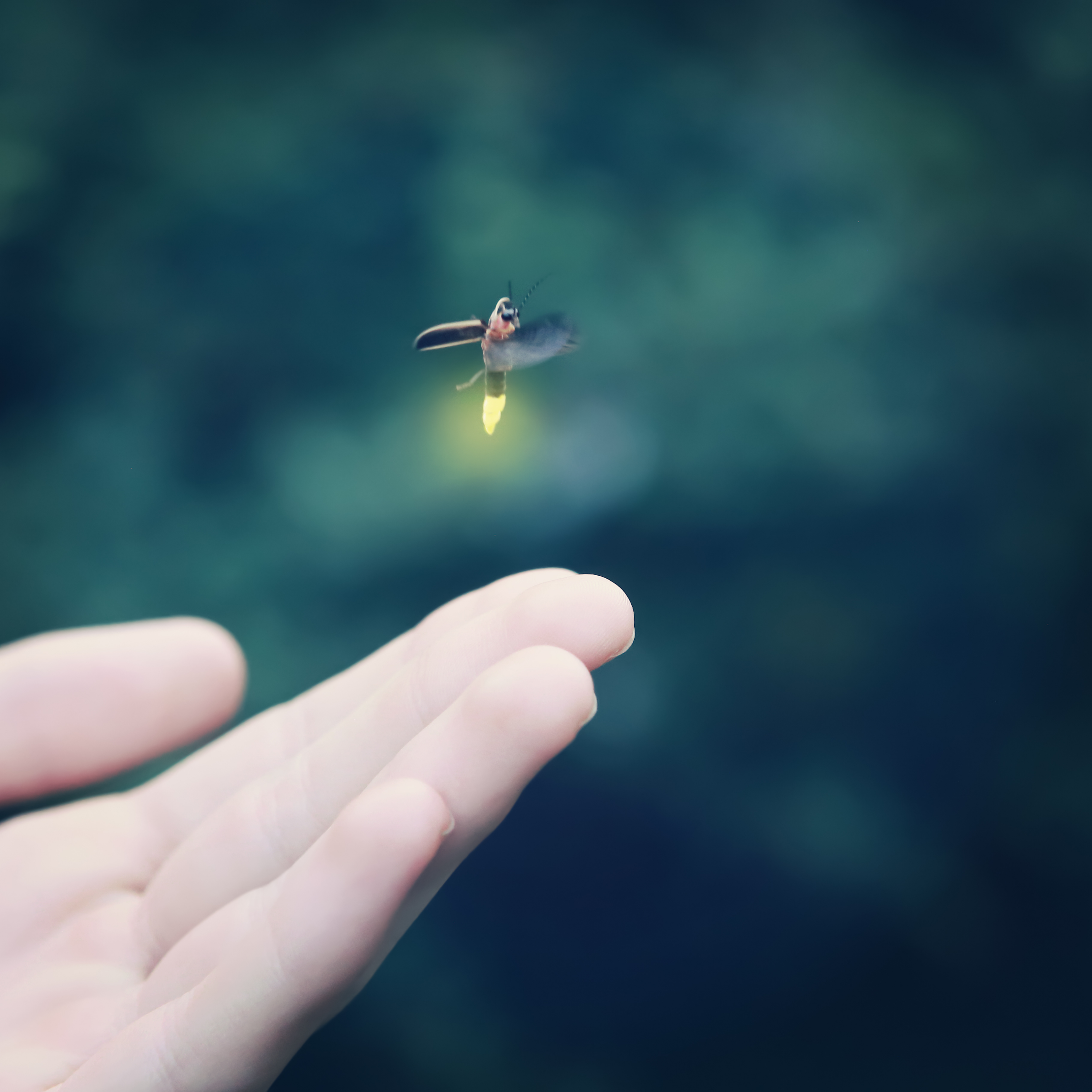Blog
Nature's Shooting Stars
.png)
by Laura Weinel, Community Engagement Coordinator
Being outside on a summer night holds a magic and mysticism all its own. On those June evenings when the fireflies rouse to life, they seem to mirror the sky—each blink akin to the twinkling of the stars. And just as we follow the stars and their patterns and celebrate when meteors light up the sky, so too do we delight in that first flicker of a firefly each year. Smaller in size but shooting stars all the same.

They may rival the constellations in their splendor, but fireflies’ twinkling serves some practical purposes, too. Fireflies glow because of the natural phenomenon known as “bioluminescence,” or a chemical reaction in which light is produced. Bioluminescence serves as a way for fireflies to find mates, as well as to warn would-be predators they are unpleasant to eat (even toxic, in some cases). A feature that is much more common among marine animals, fireflies are one of just a few terrestrial lifeforms that emit glowing light. Their glowing illuminates an otherwise dark world, like stars on a clear night.
While their common names, “fireflies” and “lightning bugs,” certainly lend to their celestial air, fireflies are neither flies nor true bugs. Rather, they are a type of beetle. Like all beetles, fireflies’ lifecycle is made up of four stages. Eggs are laid in the summer, then hatch as larvae and spend their time among the forest floor preying on small creatures like slugs, snails, and worms.

After hibernating underground over winter, the larvae emerge in the spring and pupate into adults (usually in June or July). Adult fireflies are in a race against time to find a mate and lay eggs during their short lifetime, which typically only lasts a month or two. Like a meteor shower, their lives are one fleeting, spectacular burst of light.
The stars shine with an intensity that captivates our imaginations from millions of miles away. But right here in our own backyards is a show that is arguably just as mesmerizing. Around twilight, wait for the daytime world to fall silent, then observe. A flash of neon light. Then another. It won’t be long now before the firework display has begun. It almost feels too beautiful, too special, to be real. Careful, though. Like shooting stars dancing through the cosmos, blink, and you just might miss them.